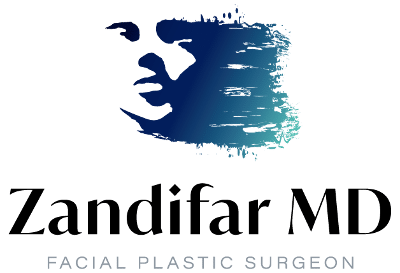Facial reconstructive procedures have witnessed remarkable advancements in recent years, with the integration of minimally invasive techniques revolutionizing the landscape of aesthetic and reconstructive surgery. Driven by a commitment to both efficacy and patient satisfaction, facial reconstructive surgeons like Dr. Zandifar are embracing these innovative approaches. In this detailed exploration, we’ll delve into the world of minimally invasive techniques in facial reconstructive procedures, understanding their significance, benefits, and how they are shaping the future of facial aesthetics.
Understanding Minimally Invasive Techniques:
Minimally invasive techniques refer to surgical procedures that aim to achieve the desired results with minimal disruption to the surrounding tissues. Unlike traditional open surgeries that involve large incisions, minimally invasive procedures utilize small incisions or entry points, often guided by advanced imaging technology.
Applications in Facial Reconstructive Procedures:
- Facelifts:
– Traditional facelifts involved extensive incisions to lift and reposition facial tissues. Minimally invasive facelifts, such as the thread lift or Silhouette InstaLift, use sutures or threads placed under the skin to lift and tighten specific areas.
- Blepharoplasty:
– Eyelid surgery, or blepharoplasty, is commonly performed using minimally invasive techniques. Laser blepharoplasty, for example, utilizes laser technology to make precise incisions, reducing bleeding and accelerating the healing process.
- Rhinoplasty:
– Minimally invasive rhinoplasty, often referred to as the “liquid nose job,” involves the strategic injection of dermal fillers to reshape and enhance the nose without the need for surgery.
- Injectables and Fillers:
– Botox, dermal fillers, and other injectables play a significant role in facial reconstructive procedures. These substances are strategically injected to address wrinkles, lines, and volume loss, providing a non-surgical alternative to certain facial enhancements.
Benefits of Minimally Invasive Techniques:
- Reduced Scarring:
– One of the most evident benefits is the minimized scarring associated with smaller incisions or injections. This contributes to more discreet and natural-looking results.
- Faster Recovery:
– Minimally invasive procedures often involve less trauma to tissues, leading to reduced downtime and a quicker recovery compared to traditional surgeries.
- Lower Risk of Complications:
– The risk of complications, such as infection or excessive bleeding, is generally lower with minimally invasive techniques.
- Local Anesthesia:
– Many minimally invasive procedures can be performed under local anesthesia, reducing the risks associated with general anesthesia.
- Customization:
– Minimally invasive techniques often allow for a high degree of precision and customization, enabling surgeons to address specific concerns with greater accuracy.
Notable Minimally Invasive Techniques:
- Laser Resurfacing:
– Laser technology is employed to rejuvenate the skin, addressing issues such as wrinkles, scars, and uneven pigmentation. It stimulates collagen production, promoting a more youthful complexion.
- Thread Lifts:
– Thread lifts involve the insertion of dissolvable threads under the skin to lift and tighten sagging tissues. This non-surgical facelift alternative provides immediate results with minimal downtime.
- Injectable Fillers:
– Dermal fillers, including hyaluronic acid-based fillers, are used to restore volume, smooth wrinkles, and enhance facial contours. They can address concerns such as sunken cheeks, nasolabial folds, and thin lips.
The Patient Experience:
- Consultation and Customization:
– During the consultation, the surgeon collaborates with the patient to understand their goals and expectations. The use of 3D imaging technology may aid in visualizing potential outcomes.
- Procedure Day:
– Minimally invasive procedures are typically performed on an outpatient basis. The surgeon administers local anesthesia or a numbing agent to ensure the patient’s comfort throughout the procedure.
- Recovery and Results:
– The recovery period varies depending on the specific procedure. Patients often experience less swelling and bruising compared to traditional surgeries. Results gradually improve in the weeks following the procedure.
Incorporating minimally invasive techniques into facial reconstructive procedures marks a paradigm shift in the field of aesthetic and reconstructive surgery. At Dr. Zandifar’s Clinic, our commitment is to harness the power of innovation to provide patients with safe, effective, and personalized solutions. Whether seeking facial rejuvenation or corrective procedures, our team of experts is dedicated to enhancing your natural beauty through the artistry of minimally invasive techniques.
Experience the transformative possibilities of minimally invasive facial reconstructive procedures. For personalized guidance and a journey to renewed confidence, contact us today.


